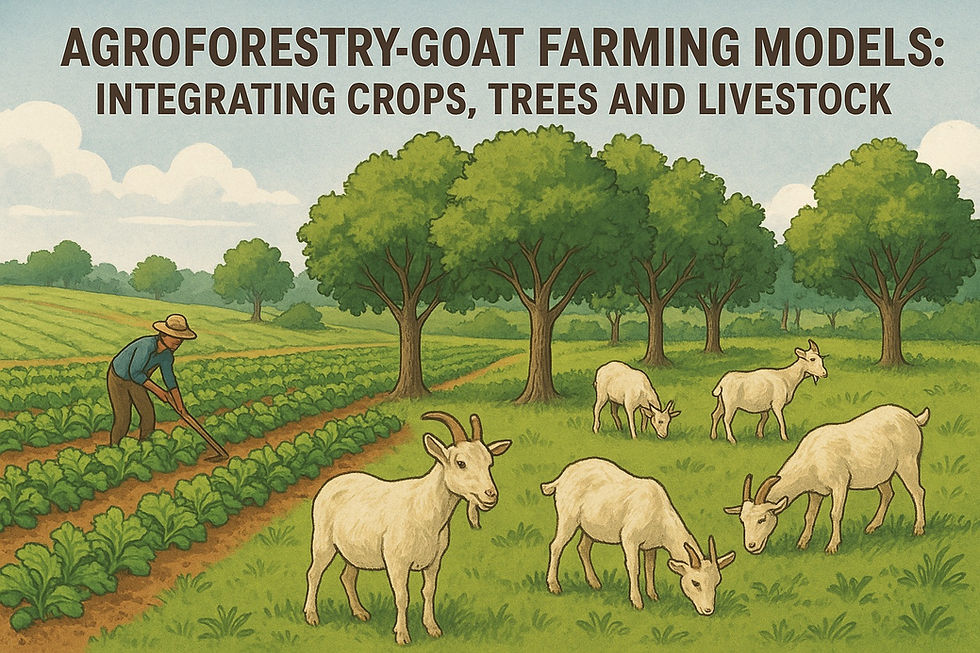Best Practices of Backyard Poultry Farming Business
- Global Services TGT
- Oct 24, 2024
- 3 min read

Backyard Poultry farming is a popular and sustainable way to produce eggs and meat for personal use or small-scale commercial purposes. Whether you’re new to poultry farming or seeking to improve your current practices, following best practices can maximize your success. The total poultry has increased by 16.81% and the total poultry is 851.81 million during 2019. Over 45.78% increase in backyard poultry and total backyard poultry is 317.07 million in 2019 The commercial poultry has increased by 4.5% and the total commercial poultry is 534.74 million. Here’s a comprehensive guide to the best practices for running a successful backyard poultry farming business:
Choosing the Right Breed: The selection of Bird should align with your objectives. For egg production, consider high-laying breed like Frizzle, Kadaknath or Naked Neck. For meat, Sonali, Devendra or Golden-92 are preferred. Select those breeds that are resilient to your local climate and resistant to common local diseases.
Housing & Shelter: Each bird requires about 2-3 square feet in a coop and additional space outdoors for foraging. Proper ventilation is essential to prevent respiratory issues. Ensure natural or artificial lighting, as birds need around 14-16 hours of light per day for optimal egg production. Use secure enclosures, wire mesh and raised coops to prevent predators like foxes, dogs or hawks from harming your flock.
Nutrition & Feeding: Provide a diet rich in protein, calcium and essential vitamins. Commercial poultry feed or home-mixed grains can work well, but supplementation with greens, insects for natural protein supply and grains is beneficial. Fresh and clean water should always be administered to avoid dehydration and stress. Allowing chickens to forage can help reduce feed costs, as they’ll eat insects, weeds and seeds from their surroundings.
Health Management: Vaccinate your birds for common diseases like Newcastle disease and fowl pox. Keep a close watch on bird behaviour and physical health to catch early signs of illness. Regularly clean the coop and feeding equipment’s. Limit access to wild birds and other animals that can transmit diseases. Ensure regular checks and treatments for external parasites like mites and lice, as well as internal ones like worms.
Breeding & Flock Management: If breeding is part of your operation, select only healthy, productive birds. Maintain a proper ratio of hens to roosters (generally 10:1) to ensure fertility without overstressing the hens. Manage your flock size according to the space available and your capacity to care for them. Overcrowding leads to stress, lower productivity and increased disease risks.
Waste Management: Chicken manure is an excellent fertilizer but needs to be composted before use to avoid burning plants. Proper composting also helps manage odor and prevents flies. Ensure routine cleaning of the coop to prevent the buildup of harmful bacteria and ammonia from droppings, which can affect your birds’ health.
Marketing & Selling: Whether you’re selling eggs, meat or live chickens, understand your target market. You can sell directly to consumers at local farmer’s market or establish relationships with small restaurants and stores. Set up a small-scale brand with a name and label. Using social media and community connections can help promote your farm and products. Ensure competitive pricing that accounts for production costs, including feed, housing, healthcare and labor.
Sustainability Practices: Use water-efficient equipment and recycle rainwater if possible. Encourage free-range or rotational grazing to optimize land use and reduce reliance on commercial feed. Combine birds with other farming activities like gardening or goat farming for a more sustainable and profitable system.
Record Keeping: Keep records of egg production, feed costs and health checks to identify patterns and improve efficiency. Maintain detailed financial records to monitor profitability and ensure the sustainability of the business.
Continuous Learning & Improvement: Keep learning about new techniques, tools and innovations in poultry farming. Attend workshops, trainings or join poultry farming networks to stay updated. Be flexible to adapt to environmental, market or technological changes. This could involve trying new breeds, feeds or marketing strategies.
By following these best practices, you can manage a successful and sustainable backyard poultry farming business. With the right care, attention to detail and smart management, you’ll be able to create a thriving enterprise while enjoying the benefits of raising poultry in your backyard.


Comments